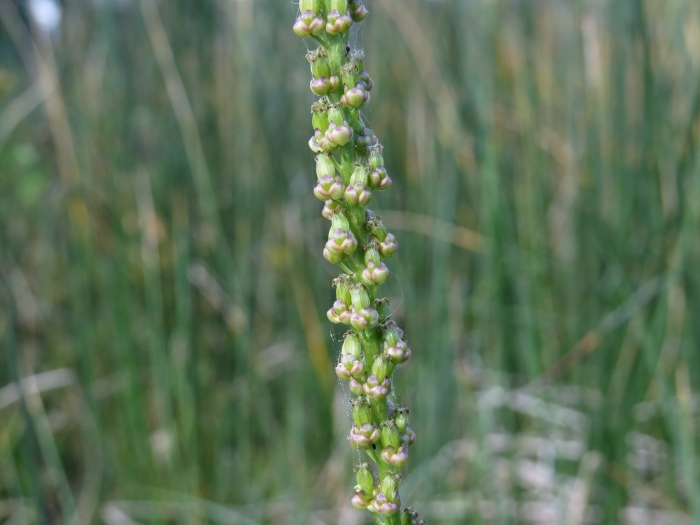Seaside Arrowgrass
(Triglochin maritima)
Seaside Arrowgrass (Triglochin maritima)
/
/

© Jack Bindernagel
CC BY 4.0
























Estimated Native Range
Summary
Seaside Arrowgrass is valued for its ability to thrive in saline environments, making it suitable for coastal restoration projects and erosion control. It is also a food source for wildlife, including sheep and deer, despite its potential toxicity, which is usually a result of cyanogenic glycosides that can release cyanide when the plant is stressed, such as during drought. In cultivation, it requires consistently moist or wet soil conditions, full sun to part shade, and can be used as a ground cover in water gardens or naturalized areas.CC BY-SA 4.0
Plant Description
- Plant Type: Herb, Grass
- Height: 1-2.5 feet
- Width: 0.5-1 feet
- Growth Rate: Moderate
- Flower Color: Brown, Green, Purple, White
- Flowering Season: Spring, Summer, Fall
- Leaf Retention: Deciduous
Growth Requirements
- Sun: Full Sun
- Water: Medium
- Drainage: Fast, Medium, Slow
Common Uses
Edible*Disclaimer: Easyscape's listed plant edibility is for informational use. Always verify the safety and proper identification of any plant before consumption., Erosion Control, Low Maintenance, Water Garden
Natural Habitat
native to coastal salt marshes, brackish marshes, and wetlands across the Northern Hemisphere, including North America, Europe, and Asia
Other Names
Common Names: Seaside Arrowgrass, Marsh Arrowgrass, Sea Arrow-Grass, Shore Arrowgrass
Scientific Names: , Triglochin maritima, Hexaglochin maritima, Hexaglochin sexlocularis, Juncago maritima, Triglochin ani, Triglochin asiatica, Triglochin concinna, Triglochin concinna var. concinna, Triglochin concinna var. debile
GBIF Accepted Name: